Contact EPA Pacific Southwest Water Division
Pacific Southwest, Region 9
Serving: Arizona, California, Hawaii, Nevada, Pacific Islands, Tribal Nations
Wetlands of the Pacific Southwest
| Wetlands Quick Finder | |||
|---|---|---|---|
| Wetlands homeGrants | Permit ReviewRegional Wetlands | Regulatory/EnforcementResources & Partners | MudflatsVegetated Shallows |
National Links
On This Page:
Compliance and Enforcement
Permit Review
Under section 404 of the Clean Water Act, wetlands staff reviews Army Corps of Engineers public notices that describe proposals to discharge dredged or fill material into waters of the United States. If a proposed project does not comply with EPA’s section 404(b)(1) Guidelines (PDF) (40pp 109 K), EPA works with the Corps, other agencies, and the permit applicant to bring the project into compliance. If the project, even with extensive modification, does not comply with the Guidelines, the Corps cannot authorize it.
Each year, regional wetlands staff reviews hundreds of proposed projects; in 2004, for example, EPA reviewed 329 projects ranging from small bank protection work to large residential subdivisions.
In reviewing Corps public notices, EPA gives greatest attention to projects that will have unacceptable impacts to Aquatic Resources of National Importance, as described in an agreement between EPA and the Corps.
There are four Corps of Engineers District Offices within EPA Region 9:
Each of these Corps offices posts current public notices on their websites.
Enforcement
Our office pursues enforcement actions against entities who conduct unauthorized activities (e.g., dredging, filling, grading without a permit) in waters of the United States. We work with the Corps of Engineers and other agencies to prioritize and select cases, and to coordinate field research, damage assessments, and legal proceedings. Enforcement can be pursued via administrative (civil) actions, or through criminal proceedings in conjunction with EPA’s Criminal Investigations Division. Each week, Region 9 receives reports of potential violations from other agencies or communities. In each case, the reported violation is added to our tracking system, and case files are prepared for potential enforcement actions.
Recent Administrative Orders and Consent Decrees
You will need Adobe Reader to view some of the files on this page. See EPA’s PDF page to learn more.
Dr. Virgil Place and the Pua Mau Place Botanical Gardens, Inc.
- Administrative Order on Consent (PDF) (13 pp, 64K)
Muranaka Farms
- Consent Agreement and Proposed Final Order (PDF) (8 pp, 421K)
- Findings of Violation and Order for Compliance (PDF) (11 pp, 483K)
Richiutti
- Findings of Violation and Order for Compliance (PDF) (14 pp, 134K)
Staben
- Findings of Violation and Order for Compliance (PDF) (12 pp, 525K)
Staben Consent Decree, March 2, 2012 (PDF) (22 pp, 133K)
Union Pacific Railroad Company
Van Trees
- Findings of Violation and Order for Compliance (PDF) (15 pp, 334K)
Wendt Construction
- Findings of Violation and Order for Compliance (PDF) (20 pp, 3.3M)
To report a potential violation, contact:
David Wampler (wampler.david@epa.gov),
Clean Water Act Compliance Office (WTR-7)
U.S. Environmental Protection Agency
75 Hawthorne Street
San Francisco, CA 94105
(415) 972-3975
Environmental Results from Wetlands Enforcement Actions
The EPA often requires individuals -- companies and other entities -- to pay monetary penalties for violating wetlands requirements. In addition, the EPA can require restoration or mitigation of impacts to any waters or wetlands that may have been damaged or destroyed. In these cases, the first priority is to remove the discharged material and restore the site. However, if this is not feasible, mitigation at other sites may also be considered. Restoration and mitigation can include a range of activities, such as:
- Restoring streambeds or wetlands which may have been damaged
- Reintroducing native species through planting
- Removing "exotic," or non-native species
Individuals must monitor restoration projects to ensure that native species reintroduced to the area are growing properly. In addition, the growth of non-native plants must be minimized. Projects must be monitored for a fixed period of time which is determined by the specifics of the site. Typically, the monitoring period has ranged between five and 10 years.
In order to determine if a restoration project has been successful, each project must meet success criteria, which are established on a case-by-case basis for each site. The criteria are linked to project goals determined by EPA. For example, to restore vegetation to an area, EPA may require that the site achieve certain survival rates of native plants or percent land cover by a specific date. For instance, the site may be required to exhibit 80% survival of planted native species after the first year, and 100% during each of the next four years.
Serrano Creek (Lake Forest, Calif.)
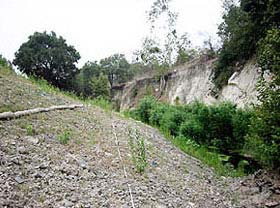
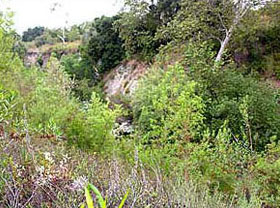
During August and September 2000, Autumnwood Homeowners Association (Association) discharged dredged and fill material into Serrano Creek without first obtaining a Section 404 permit from the Army Corps of Engineers. The Association filled approximately 500 feet of Serrano Creek in an attempt to stop flooding and erosion problems. On November 30, 2000, EPA issued an Administrative Order requiring the Association to stop discharging the materials into Serrano Creek and develop and implement a plan to restore the site. The restoration plan requires that the Association remove the fill material, restore native plants to the site, remove exotic species, and monitor the site until 2007.
San Luis Rey River (San Diego County, Calif.)
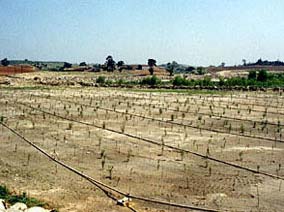
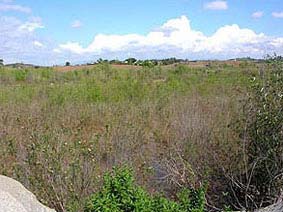
On several days in 1998, Singh and Sons Inc. (Singh) discharged dredged and fill material into approximately 21 acres of the San Luis Rey River without first obtaining a Section 404 permit from the Army Corps of Engineers. Singh discharged the materials into the San Luis Rey River, adjacent wetlands and tributaries in an attempt to convert the wetlands into farmland. On September 6, 2000, EPA issued an Administrative Order requiring Singh to stop discharging the materials into the River and to implement a restoration plan for the site. The restoration plan requires that Singh remove fill material, restore native plants to the site, remove the exotic Giant Reed (Arundo donax), and monitor the site until 2007.
San Mateo Lagoon (San Diego County, Calif.)
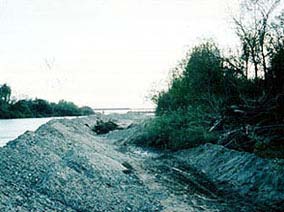
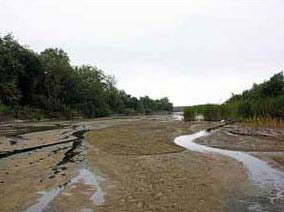
In early 1998, the North County Transit District (NCTD) discharged dredged and fill material into approximately three acres of San Mateo Lagoon without first obtaining a Section 404 permit from the Army Corps of Engineers. On July 15, 1998, EPA issued an Administrative Order requiring NCTD to stop discharging the materials into the Lagoon and implement a site restoration plan. Specifically, the plan required NCTD to reintroduce a native fish -- the Tidewater Goby (Eucyclogobius newberryi) -- to San Mateo Lagoon. The plan also required NTCD to remove fill material, restore native plants and remove exotic plant species. NCTD implemented the plan over a six year period and met all success criteria. EPA closed the Administrative Order in July 2005.
